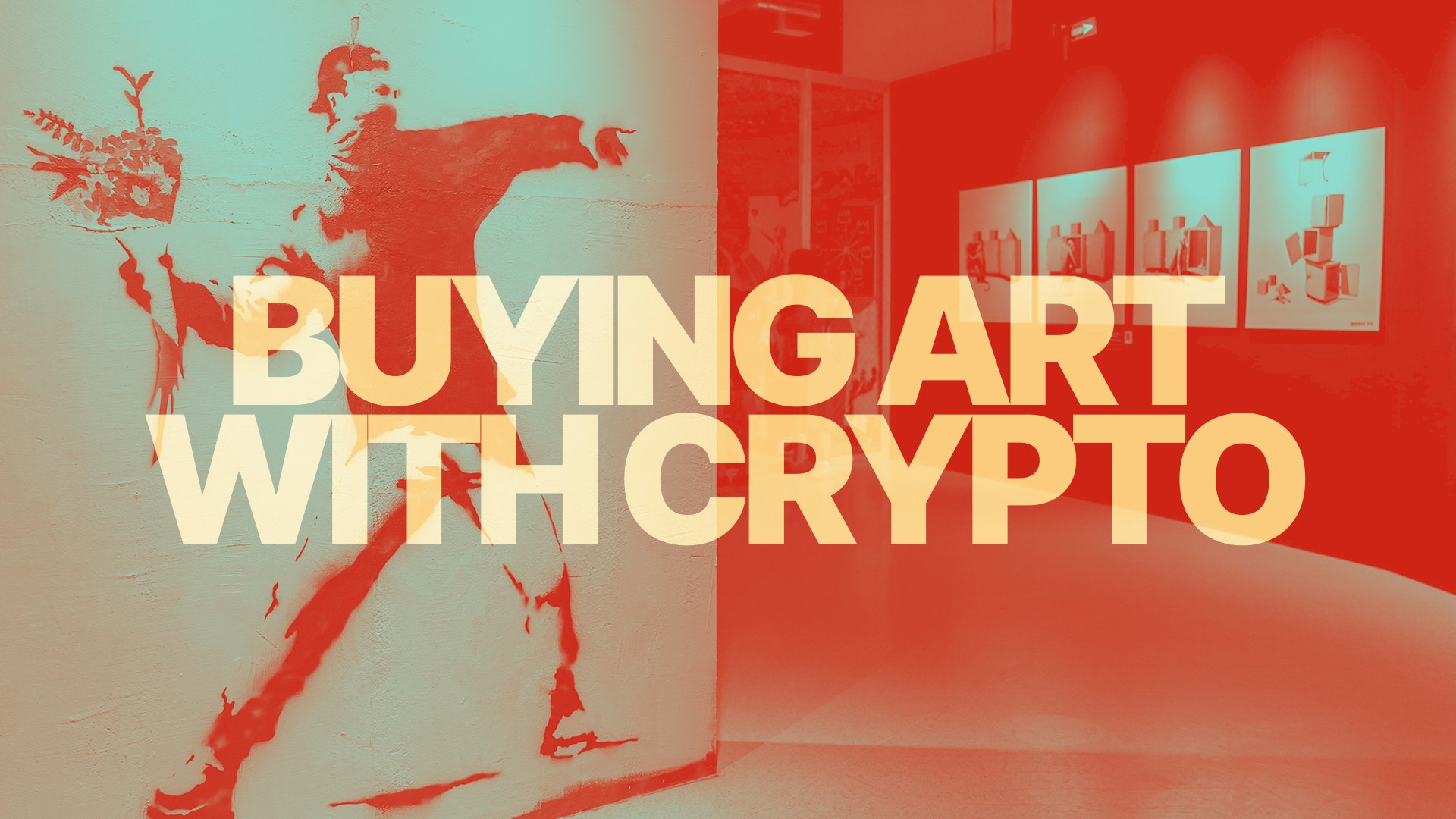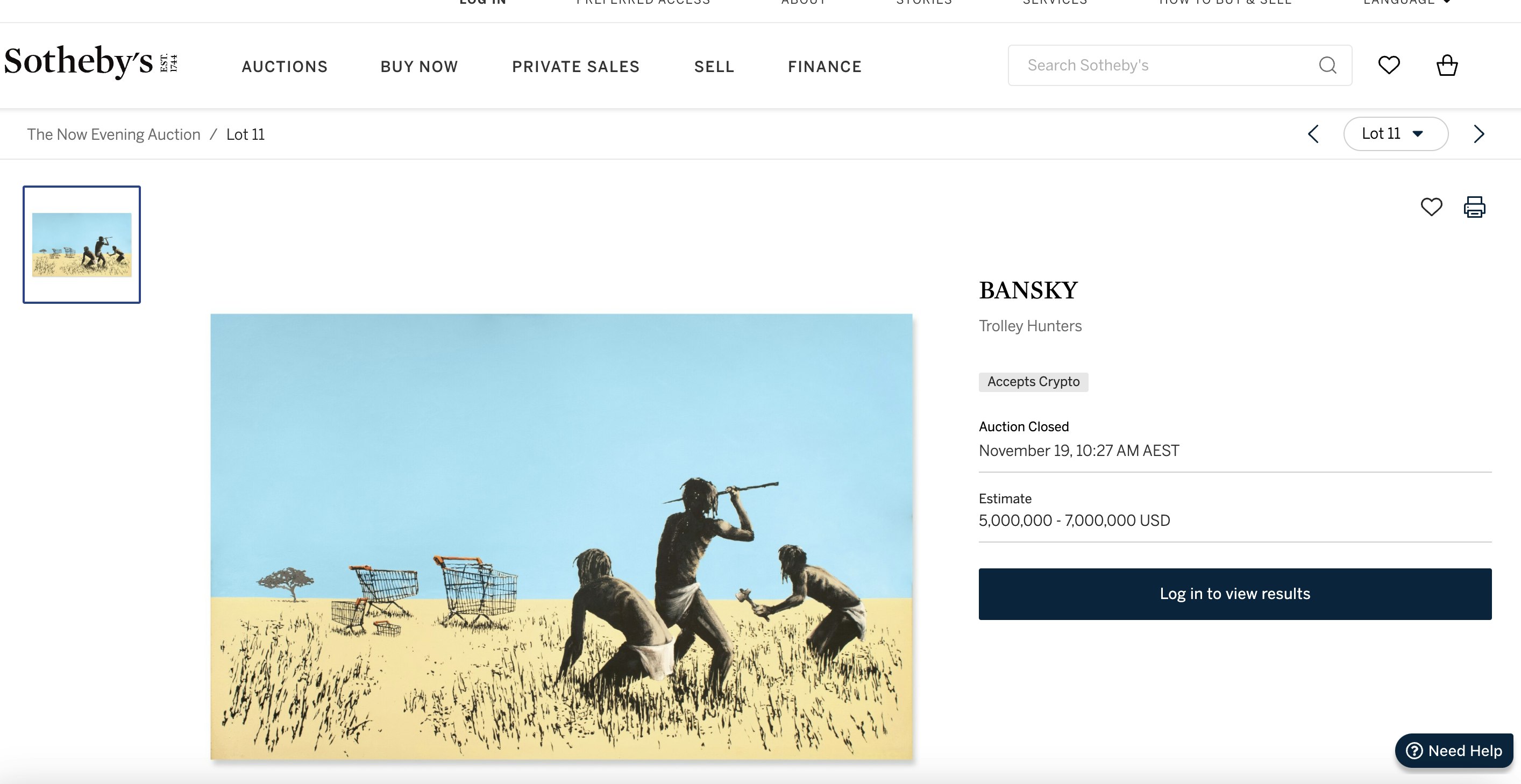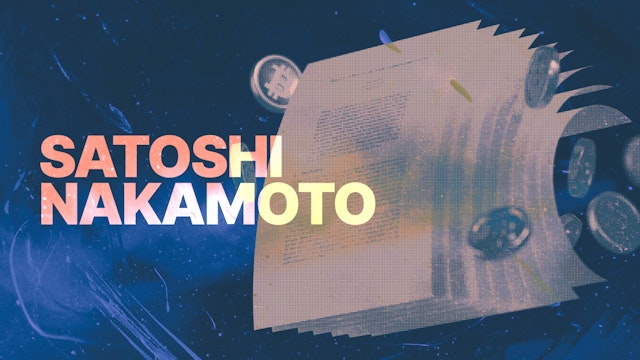Don’t invest unless you’re prepared to lose all the money you invest. This is a high‑risk investment and you should not expect to be protected if something goes wrong. Take 2 mins to learn more.
Want to Buy a Famous Artwork or Giant Jewel? You Can Pay in Crypto
Art and crypto seemed to have had an easy connection from the inception of the blockchain.
In this article...
- Art and crypto seem to have an easy alliance
- Auction houses are increasingly accepting crypto in payment
- Which famous artworks have price tags in crypto?

The intersection of art and cryptocurrency has evolved dramatically in recent years, with prestigious auction houses like Sotheby’s leading the charge by embracing digital currencies as a payment method for physical artworks.
Since 2021, Sotheby’s has allowed buyers to pay for select artworks using Bitcoin (BTC) and Ethereum (ETH), a trend that has broadened the appeal of high-value art to a tech-savvy, crypto-rich clientele.
Sotheby’s: Pioneering crypto payments for iconic artworks
Sotheby’s made headlines in May 2021 when it became the first major auction house to accept cryptocurrency for a physical artwork. The work in question was Banksy’s Love is in the Air..
This artwork is a stencil of a protester hurling a bouquet of flowers.
Banksy's "Love is in the Air"
When this went on sale, there was an option to pay the hammer price in BTC or ETH.
The piece, which sold for US$12.9 million, marked a turning point, proving that crypto could seamlessly integrate into the traditional art market.
As of the time of writing, March 9, 2025, Sotheby’s continues to feature auctions where cryptocurrency is an accepted payment method.
Famous artworks sold for crypto
There are other famous artworks that have been sold where the buyer could pay in crypto. Here are some examples.
Banksy’s Trolley Hunters
In November 2021, Sotheby’s auctioned this satirical piece depicting three prehistoric hunters targeting shopping carts.
This auction accepted live bids in Ethereum alongside traditional USD bids. Estimated at $5-7 million, it showcased Banksy’s biting social commentary and fetched a strong price from a crypto-paying buyer.

Crypto for bling: Jewels
Sotheby’s doesn’t limit crypto payments to canvas. In July 2021, they sold a 101.38-carat diamond, The Key 10138, for $12.3 million in cryptocurrency, setting a record for the largest crypto transaction for a physical item at auction.
Diamonds for Crypto
Sotheby’s isn’t alone in bridging the gap between crypto wealth and high art and valuables. Several galleries, auction houses, and private dealers have followed suit, catering to collectors who prefer to spend their digital fortunes on tangible masterpieces.
Christie’s: Crypto adoption and high art
Christie’s, Sotheby’s arch-rival, has also embraced cryptocurrency for artworks. In 2021, they expanded crypto payments beyond their landmark $69 million Beeple NFT sale to include traditional artworks. A Keith Haring painting went to auction in London whereby the buyer could pay in crypto. The auction also featured masterpieces by Alberto Giacometti, Pablo Picasso, and Edgar Degas.
The untitled Keith Haring work, created in 1984, captures the dawn of the digital age with its image of a computer. It carried an estimated price tag of $5.42-$6.25 million. Christie’s announced that buyers could pay the full amount, both the final bid and the buyer’s premium, using either Ether or Bitcoin.
Phillips: Crypto-friendly auctions
Phillips, another major auction house, also accepts crypto payments for physical art. While initially focused on contemporary works, like Banksy pieces, they announced they would accept BTC and ETH for lots like a Jean-Michel Basquiat painting or a Yayoi Kusama mirrored sculpture.
Their 2025 auctions, particularly in New York and Hong Kong, are likely to feature crypto-eligible works.
The bigger picture: Why crypto for art
Allowing buyers to purchase famous artworks using crypto signals a shift in how wealth is accumulating. For example, the biggest donors of the 2024 US election cycle were from the crypto industry.
For Sotheby’s and its competitors, it’s a strategic move to tap into the new crypto-rich demographic. And there are plenty of crypto entrepreneurs and blockchain investors who are sitting on a stash of digital assets that need a good Banksy on their wall.
Freeports
Here’s a thought. What if you wanted to diversify your wealth out of crypto because you sense a bear market looming? You could park some of your crypto wealth in art. And you could send it to a freeport to be stored.
A freeport is a secure, tax-advantaged storage facility located in a designated zone where goods like art, jewellery, wine, or gold can be stored without paying customs duties or tax, as long as they remain in the facility.
These zones operate under special economic regulations, often in international transit hubs, like Geneva and Zurich, Singapore and Luxembourg.
Wealthy collectors, dealers, and investors use freeports to park wealth via valuable artworks as part of a broader wealth-preservation playbook.
For example, the Geneva Freeport reportedly holds billions in art, from Old Masters to modern works, making it a “vault” for the ultra-rich. It operates as a legal offshore account for physical assets. Instead of cash, it’s a warehouse of Warhols and Rembrandts.
While stablecoins could theoretically be a place to park wealth in a falling crypto market, some stablecoins have proven to be not so stable, so diversification away from crypto could lead to an expensive artwork in a freeport.
Challenges: Crypto and art
Challenges remain. Crypto’s volatility can complicate pricing while trying to buy a famous painting or sculpture. For example, while bidding on a Matisse, ETH could drop 10% mid-auction.
Still, if you have enough crypto to buy a Matisse in the first place, do you even care?
For collectors who genuinely love art, it’s a thrilling time. It is the chance to own a piece of history, paid for with the currency of the future. Next time you see a famous artwork being purchased for crypto, we can certainly have fun guessing who it was that bought it.

Suggested Articles

Who Is Satoshi Nakamoto, the Mysterious Bitcoin Creator?
The mysterious creator of Bitcoin has never been exposed... yet. Who is it? Here's what we know so far... Read more
Bitcoin Dominance: Is Alt Season Near? Technical Analysis May Provide Clues
What is Bitcoin Dominance? And how can keeping an eye on it give insight into alt season? Here is the explainer.Read more
How to Buy Bitcoin (BTC) in the UK the Convenient Way
Want to Buy Bitcoin in the UK? Buy BTC the convenient way by using CoinJar. They have been in operation since 2013.Read moreBrowse by topic
Your information is handled in accordance with CoinJar’s Privacy Policy.
Cryptoassets traded on CoinJar UK Limited are largely unregulated in the UK, and you are unable to access the Financial Service Compensation Scheme or the Financial Ombudsman Service.
We use third party banking, safekeeping and payment providers, and the failure of any of these providers could also lead to a loss of your assets.
We recommend you obtain financial advice before making a decision to use your credit card to purchase cryptoassets or to invest in cryptoassets. Capital Gains Tax may be payable on profits.
CoinJar’s digital currency exchange services are operated in the UK by CoinJar UK Limited (company number 8905988), registered by the Financial Conduct Authority as a Cryptoasset Exchange Provider and Custodian Wallet Provider in the United Kingdom under the Money Laundering, Terrorist Financing and Transfer of Funds (Information on the Payer) Regulations 2017, as amended (Firm Reference No. 928767).
Apple Pay and Apple Watch are trademarks of Apple Inc. Google Pay is a trademark of Google LLC.
This site is protected by reCAPTCHA and the Google Privacy Policy and Terms of Service apply.

